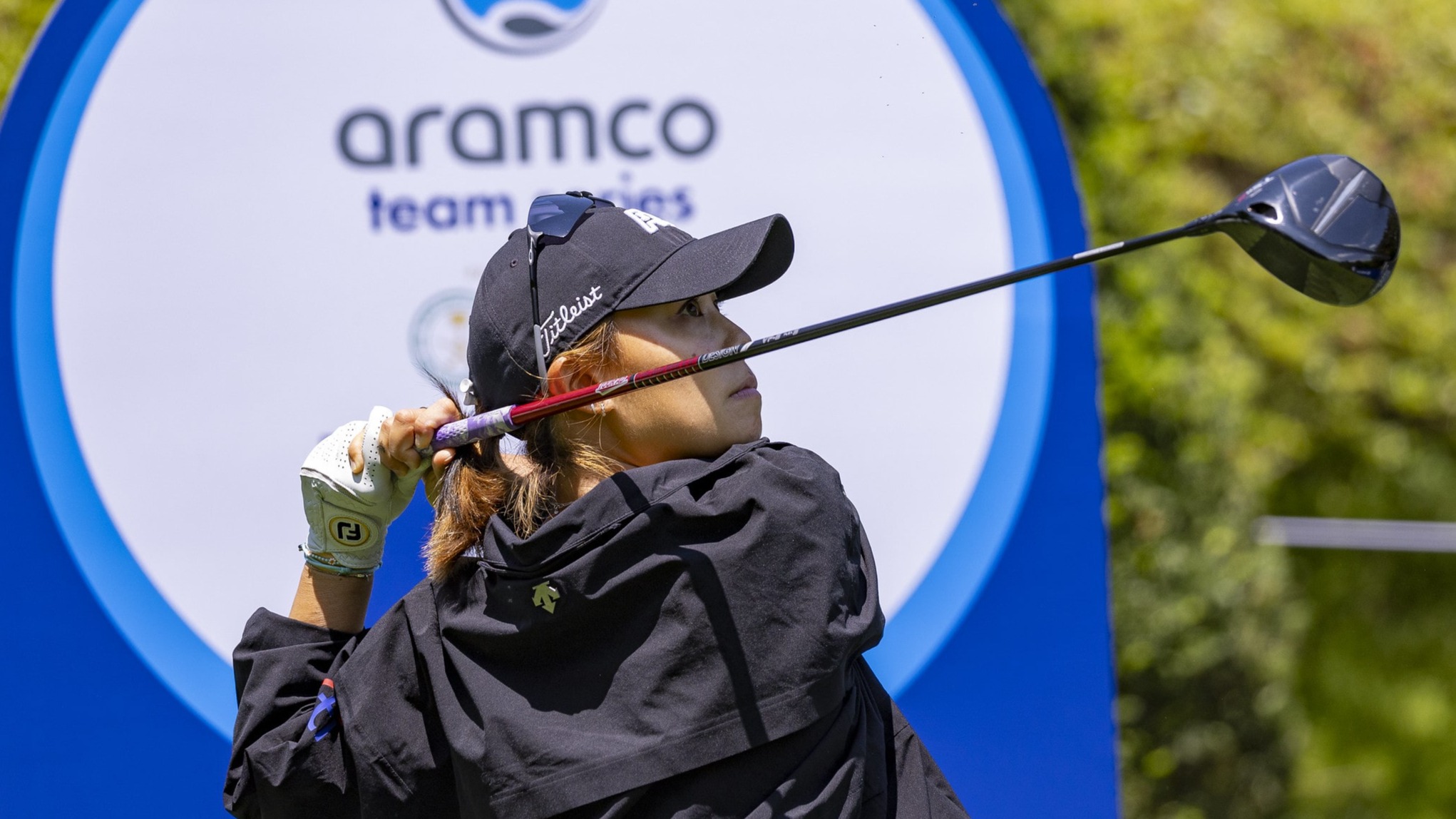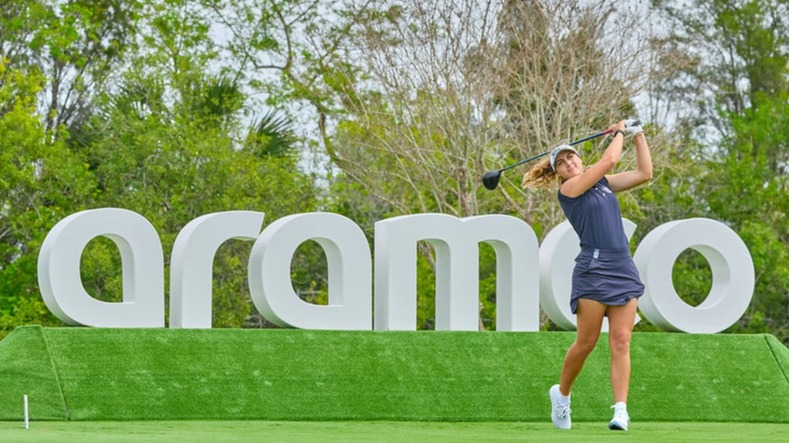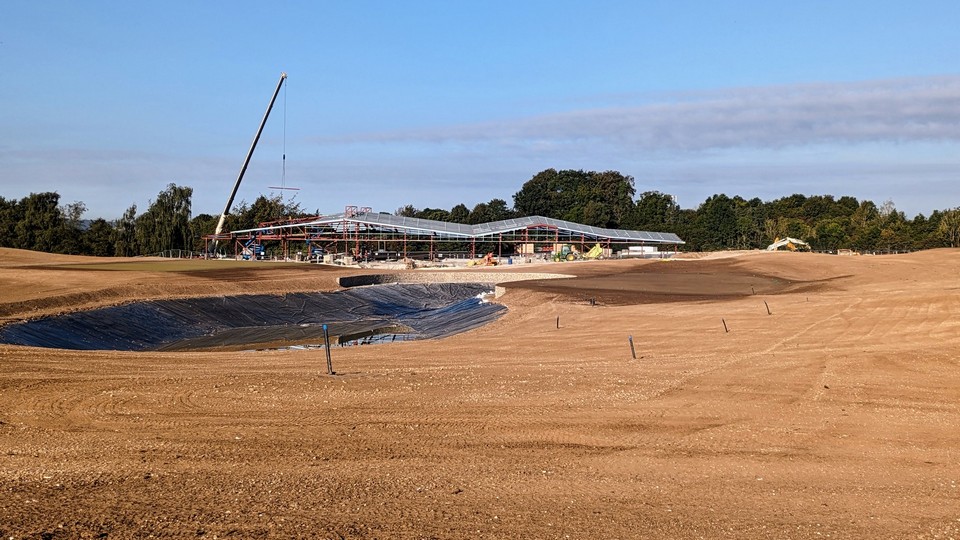Architect: Jim Fazio (1991) with major redesign by European Golf Design (2021)
Guidonia Montecelio, Italy
Say the word Italy and a number of word associations immediately come to mind. Aspects such as history, culture, the arts, music and food are certainly on the short list. The eye fulfilling landscapes that dot the entire country are also notable for the stunning beauty they provide.
However, say the word "golf" and the connection becomes far less apparent.

Golf does exist in Italy but the game operates at a far lower profile than other more active mainland European countries such as Spain and Sweden.
The golf scene has been helped with the tournament exploits of Francesco Molinari who captured the 2018 Open Championship at Carnoustie becoming the first Italian to win one of golf's four major events.
At the end of 2015, it was announced that Marco Simone would become just the third facility on the European mainland to host the most prestigious of team events -- the Ryder Cup.
Marco Simone is no stranger to high level competition having hosted three Italian Opens but landing the Ryder Cup will now provide a far higher global awareness and spotlight.
The course was designed originally by Jim Fazio.
The redesign of Marco Simone was led by European Golf Design in cooperation with Tom Fazio II. Work began in August 2018 and was completed in March 2021.
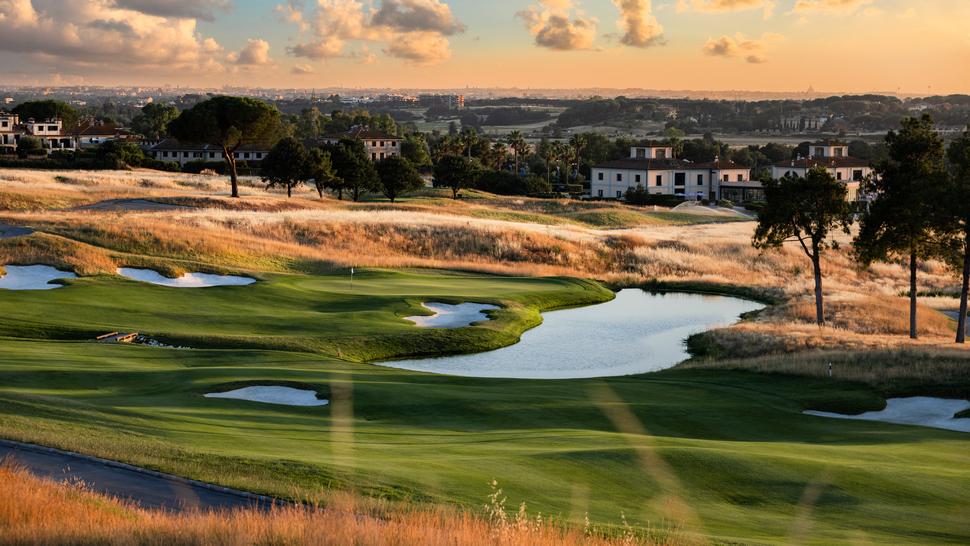
The focus was on creating a golf course specifically with the drama of match play in mind, with the previous layout rerouted not only to provide numerous risk and reward opportunities for the world's leading players, but also to maximize the natural rolling countryside terrain.
Spectators will have various vantage points for the on-course action as well as distant views of the famous Eternal City, including views of St. Peter's Basilica and the Castle of Marco Simone.
To fully comprehend the design details that were put into motion, Dave Sampson and Jeremy Slessor from European Golf Design were contacted for an in-depth interview on the finished effort at Marco Simone and its host role for this week's Ryder Cup.
***
When did the involvement of European Golf Design start at Marco Simone?
JS: In 2014, we were invited by Federazione Italiana Golf (FIG) to review courses around Rome for consideration as venues for Ryder Cup in preparation for FIG's bid for the 2022 Ryder Cup matches -- delayed a year because of the COVID pandemic. Of the venues we saw, Marco Simone had the best potential in terms of the space available to take the amount of infrastructure that the matches required.
DS: My personal involvement started in early 2017, when we commenced work on some new concept layouts.
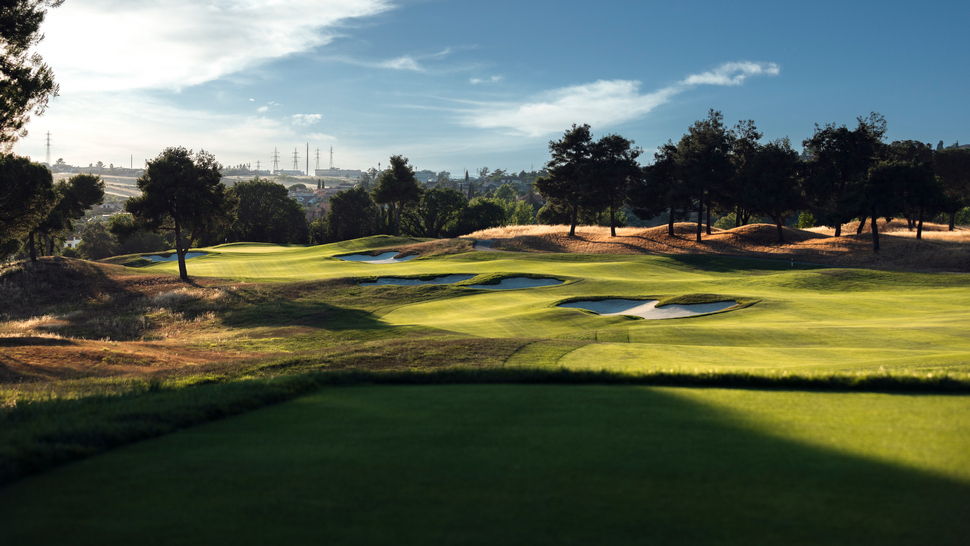
First impressions of the property were what?
DS: Initial impression was one of "potential". From the beginning, I had been briefed that not much of the existing course was going to be retained, so I was always treating the site as pretty much a blank canvas. In fact, none of the original course now remains - the only playing corridor that we retained was the new 6th, previously the 8th.
The initial surprise was the amount of elevation change across the site, which presented us with a lot of potential for both the golf holes and the spectators. Standing on the numerous high vantage points around the site, you were initially drawn to views of the surrounding rolling landscape, but that focus was then directed to the captivating long-distance views over Rome, with the standout building on the horizon being St Peters Cathedral.
From the outset, these views of Rome played a key role in the course’s routing, with the emphasis being on placing them, as well as the most dramatic and key holes, towards the end of the round.
JS: It was clear that there was enough space within the property for all of the required on-course infrastructure and enough land around the property for all of the off-course requirements-- bus terminals, parking etc. It was equally clear the course would require a full redesign to provide a golfing test worthy of the Ryder Cup.
How much previous experience have you had with golf in Italy besides Marco Simone?
JS: We had previously worked on projects near Venice and Padova.
DS: In 2015 I started working on a project in the north called Golf Club Asiago.
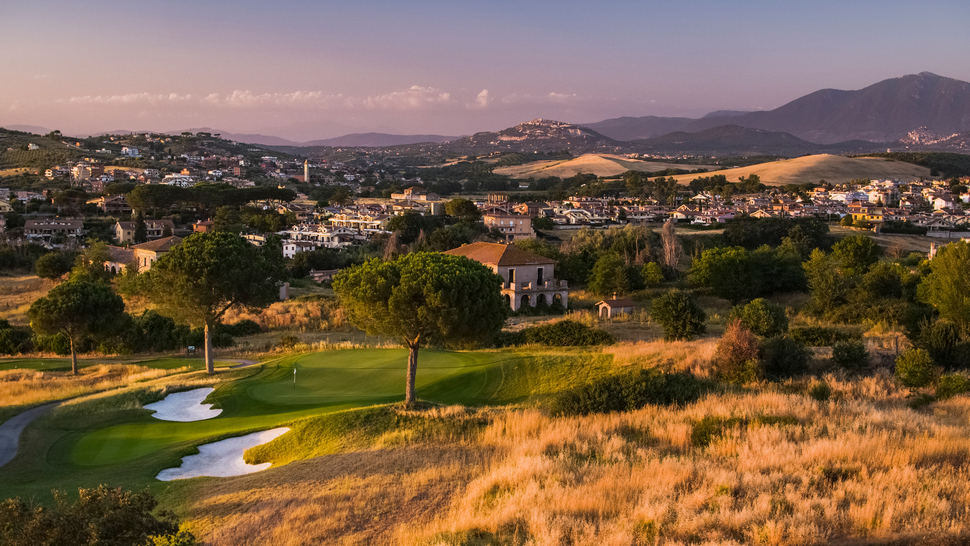
Were there any specific instructions provided regarding what work was needed from a design standpoint with the layout?
DS: Designing a course for a Ryder Cup is different to that of any normal 18-hole course. You are not only trying to find the best 18 golf holes on the piece of land, but you are also trying to find the best 18 holes for the spectator.
In terms of the actual golf course, course length is obviously important -- although 7,250 yards is not overly long, but right from the beginning we were sharing concept ideas, layouts and styling images with all the involved parties. (Ryder Cup Europe [RCE], Italian Golf Federation [FIG] and the Golf Club)
Aside from not being long enough, the previous course also had numerous pinch points and green to tee crossings which is particularly challenging for a Ryder Cup when you are trying to move the players and thousands of spectators - these sorts of things had to be avoided.
However, other than a few inputs from RCE in terms of fairway widths and providing some tee flexibility for setup options, there wasn't anything too specific in terms of design instructions.
What infrastructure items at the course also needed to be updated?
JS: The Ryder Cup matches have requirements for internal roads -- all 6 meters wide and built to highway standards, fibre optic networks throughout the course -- both for the scoreboards and jumbo screens, as well as for wifi connectivity for spectators and staff, and flat 'pads' at pre-determined points around the course upon which the hospitality units, grandstands and public areas will be located.
DS: The course had space, but other than that it didn't really have any infrastructure in place to host a Ryder Cup. As Jeremy mentions, all these infrastructure items had to be factored in during the design and construction.
Part 2
***
The Participants
Jeremy Slessor
Managing Director
European Golf Design
Has been involved in the golf course business since 1976. In that time, Slessor has worked throughout Europe, the United States, Middle East and Africa. Prior to graduating from Michigan State University, he spent several years working as a greenkeeper and deputy course manager in the UK. After graduating, he worked for the construction division of Robert Trent Jones Sr’s companies, and subsequently as a Design Associate and Senior Projects Coordinator. Based predominantly in the US, he was also responsible for the company’s European operations.
Slessor joined European Golf Design in 1994, becoming Managing Director two years later. In addition to overseeing the day-to-day operation of the company, his specific responsibilities include meeting with potential and existing clients, assisting in the initial analysis of projects and then overseeing the company’s services for each of its projects.
Given the wide geographic range of the company’s business and the equally wide range of clients for whom the company is working, he is acutely aware of current trends as they relate to golf resort development, together with the technical, financial and practical issues that result.
The Slessor Story
I started playing golf in my early teens. The following year, I needed a summer job and got hired at a local course as a seasonal greenkeeper. From that experience, my interest in golf course maintenance, and design, grew as fast as my love for playing the game. When I finished high school, I started working full-time at the golf course.
Within a few years I realized that my career progression would be dictated by those above me moving on and I was arrogant and/or ambitious enough not to have the patience to wait for that to happen, so I applied and got accepted by Michigan State University to study there. While there, with every intention of returning to the UK to recommence my greenkeeping career, I had the great good fortune of meeting Robert Trent Jones Sr, who came to the university to give a lecture.
That meeting eventually led to me working for Mr Jones for nine years, both in the USA and in Europe. From there, I moved to European Golf Design almost thirty years ago. I am lucky to have had a career that has taken me to more places around the world than I could have imagined, and that I have a job I still love.
Dave Sampson
Designer
European Golf Design
At the end of 2002, Dave graduated from the Nelson Mandela Metropolitan University in Port Elizabeth, South Africa, with a Bachelor of Arts degrees in both Architecture and Building Arts.
In 2002, Dave was the successful winner of the Golf World Design-A-Hole Competition, which led to him joining European Golf Design as a Design Associate in late 2004.
In 2008, he was promoted to the position of Designer, and now is directly responsible for project designs, management, supervision and on-site construction inspections.
Sampson was the lead designer on the tournament course at Zavidovo PGA National Russia, a course which won the 2011 Best New design in Russia award, and was also a finalist in Golf Inc’s 2012 Best New Course in the World.
In 2013, he also completed and oversaw design and construction works on the redevelopment of the Evian Resort golf course, France, in preparation for The Evian Championship, the new 5th major on the LPGA tour. In association with the golf club & the LPGA, he is currently involved in advising & overseeing continual annual improvements.
In 2009, Sampson completed design works on the Safaa Golf Couse at the King Abdullah University of Science and Technology in Saudi Arabia. His other project in the region, Royal Greens Golf & Country Club at King Abdullah Economic City, has recently won awards for, ‘Best in Saudi Arabia’, ‘Best in Arabia’ & ‘Best International’ Leisure Development 2016-2017’ at the prestigious International Property Awards. The course opened for play in September 2017 and has played host to both the Saudi Invitational and Aramco Ladies events over the past 4 years.
He started design work on the 2023 Ryder Cup course at Marco Simone back in 2017. Construction works on this high profile and prestigious project commenced in late 2018, with the course opening for play in early 2021, ahead of the Italian Open in September later that year.
A Senior Member of the European Institute of Golf Course Architects, Sampson is presently working on design projects in the UK, Italy, Turkey, Portugal, and France.
The Sampson Story
I was introduced into the game by my father at the age of 9, and pretty much from that day I was sketching out golf holes and courses on the back of anything I could get my hands on. Golf, along with many other sports, was played all the way through high school, where I managed to get the handicap down into the low single digits.
I guess I was of those fortunate few who knew from very early on what career path I wanted to follow, and that has always been to design golf courses. I chose my high school subjects accordingly, was set to study landscape architecture at the University of Pretoria, until along came a cricket scholarship from the University in Port Elizabeth, leading to a slight diversion into the field of Building Architecture.
In 2002, while completing my final year thesis (which was a Golf Academy building), my grandfather fell seriously ill, and I headed over to the UK to say my goodbyes. On my return back to South Africa, my ex-roommate from university, who was now living in the UK and knew I always wanted to get into golf, handed me the Golf World magazine with the 'Design-a-hole' competition in it. While at Heathrow waiting for the flight, I sketched out six options, posted them off, and the rest is history.
Winning the competition never got me a job, but it definitely got me a foot in the European Golf Design door. In 2003 I headed back to the UK and took a six-month job as the cricket analyst for Surrey County Cricket Club. Not only did this job give me the opportunity to travel around the UK a bit, but it also gave me time to learn more about golf course architecture (reading books between deliveries) and also the time visiting EGD, carrying out various design exercises they set me, and, whenever possible, joining them on site visits.
In late 2004, EGD offered me a role as Design Associate, and I have been here ever since.




